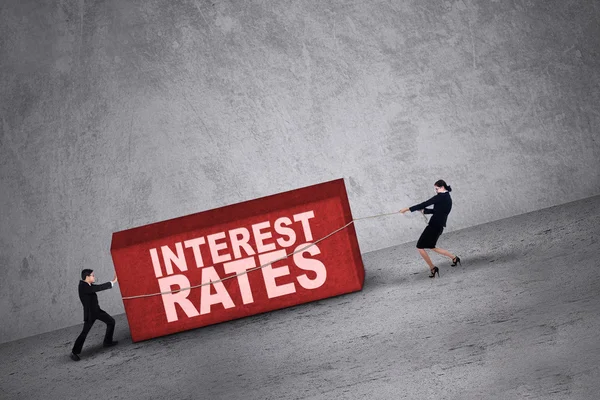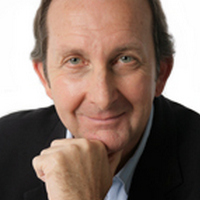

Are interest rates too high or too low? Or are they Goldilocks-style “just right”? This is the debate between two unlikely rivals about the work of Reserve Bank Governor Michele Bullock. The guys in question are Treasurer Jim Chalmers and the Reserve Bank’s recently departed chief research officer John Simon.
It’s not surprising that the Treasurer thinks the RBA’s high rates are “smashing the economy”. After all, he is a Labor politician facing an election next year, his party is losing popularity, and so is his Prime Minister. The odd thing is that he’s saying it. Meanwhile, John Simon is a public servant and these guys seldom pipe up and get political.
Chalmer’s RBA complaint is understandable as a politician worried about an election. But even Paul Keating, who loves bagging the RBA nowadays, didn’t give it to the central bank when he was Treasurer in the 1980s. That was because the Treasurer then had the final say over interest rate changes, so when home loan rates hit 17%, he could hardly blame himself. (In reality, Keating, who wasn’t a monetary policy expert, would’ve taken advice from the RBA. And like all central banks, they were then having trouble understanding how interest rates worked in a recently deregulated banking system and economy.)
That said, Chalmers could be right and the economic growth number out on Wednesday could prove him right.
The Australian’s Jack Quail neatly summed up why the Treasurer is worried that rates have been held too high for too long with this comment: “With increased government spending holding up an economy saddled with anaemic household consumption, faltering business investment and a decline in home building, GDP figures to be released on Wednesday are expected to show the Australian economy expanded by a meagre 0.2 per cent in the June quarter.”
And there’s more on this: “This would slash annual economic growth from 1.1 per cent in March to just 0.9 per cent for the last financial year – the weakest annual GDP result since the end of the early 1990s recession outside of the coronavirus pandemic”.
This might even be better than what might happen, with NAB’s chief economist Alan Oster not ruling out a negative figure on Wednesday!
Against this, when it comes to interest rates, John Simon is worried that the current board of the Reserve Bank has a few nincompoops on it. And Simon says they shouldn’t be automatically switched to the new interest-rate setting board that the Treasurer has told us he wants to set up.
He pointed to the independent review last year that found some board members lacked economic expertise that meant they were unable to challenge the governor on interest rate decisions.
While I think he’s right, given he has been head researcher for the past decade, you have to ask whether he advised Dr Phil Lowe and whether the former RBA governor ignored or used John’s research when the Dr Phil made his big call on rates staying low until 2024!
Simon’s departure from the central bank comes as economists are debating where rates are. This has seen new RBA Deputy Governor Andrew Hauser call some of these dissenting and critical economists “false prophets”. (Given I’ve always believed most forecasters were nothing more than big mouth, terribly dressed gamblers on the future, by definition, most prophets are false prophets!)
Economic forecasting is hard. After 30 plus years of economic writing relying on the work of highly regarded banking, Treasury and RBA economists, I know all of them have had good and bad calls.
Simon thinks rates should go up because current rates are skewed more toward inflation remaining unacceptably high. “He said it was possible that inflation expectations could get entrenched at high levels if the central bank failed to tame price pressures in a timely manner,” the AFR’s Michael Read revealed.
Behind his comments is the RBA’s in-house view that Treasurer Chalmers has made its inflation fighting job harder by giving tax cuts and supporting wage rises. While the bank’s boffins and Governor wouldn’t publicly squeal about that, they undoubtedly think it.
Given the Treasurer’s view on rates, many were surprised when he offered to shift all existing RBA board members on to the new monetary policy board, unless they specifically indicated they wanted to go to the governance board. “Dr Simon said he could not see how letting all existing board members move on to the monetary policy board would lead to better outcomes,” Read writes. “The review recommended the monetary policy board include economic, financial market and labour experts.”
And that sounds like a good idea and getting a new group of board members with an understanding of how rate changes affect the economy and with guts to take on the Governor as well, would be a good idea as well!
This week’s data could easily determine if rates are set to fall or rise in coming months. I find it interesting that Bruce Billson, the Australian Small Business and Family Enterprise Ombudsman, said new figures from the ATO showed that 46% of small businesses didn’t make a profit in the most recent year of available accounts, and three quarters of self-employed business owners were earning less than the average weekly wage.
Add these people to the home loan interest rate sufferers out there and that could be a big group of Aussies whose economic pain in the pocket could easily help keep inflation falling.